Mervat Abuelkheir
XAI in the context of Predictive Process Monitoring: Too much to Reveal
Feb 16, 2022
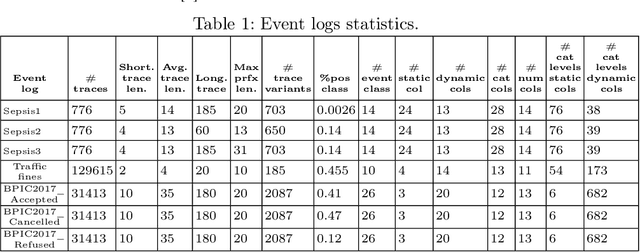
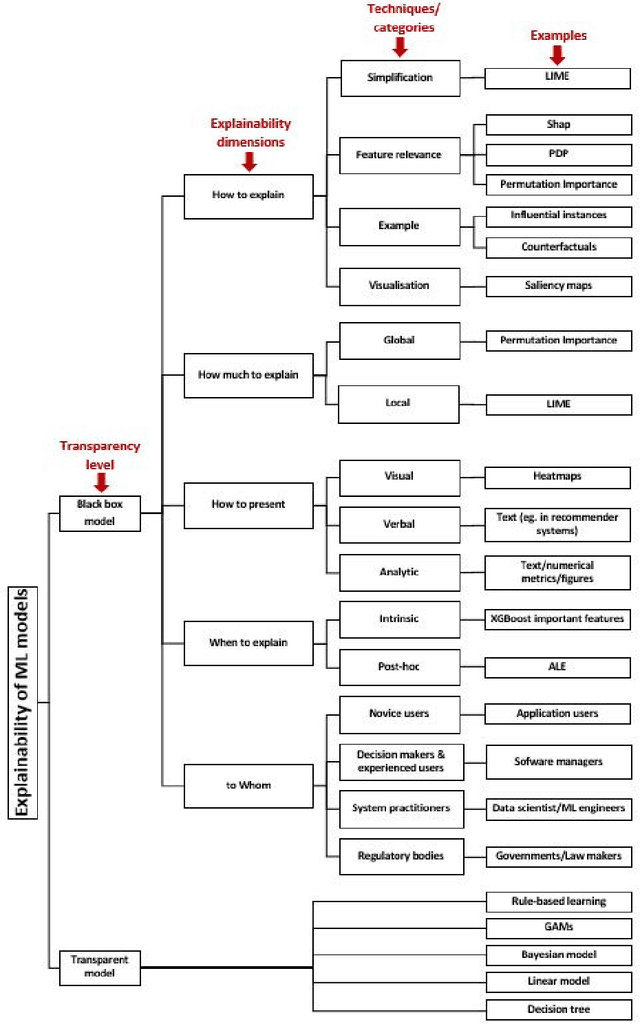

Abstract:Predictive Process Monitoring (PPM) has been integrated into process mining tools as a value-adding task. PPM provides useful predictions on the further execution of the running business processes. To this end, machine learning-based techniques are widely employed in the context of PPM. In order to gain stakeholders trust and advocacy of PPM predictions, eXplainable Artificial Intelligence (XAI) methods are employed in order to compensate for the lack of transparency of most efficient predictive models. Even when employed under the same settings regarding data, preprocessing techniques, and ML models, explanations generated by multiple XAI methods differ profoundly. A comparison is missing to distinguish XAI characteristics or underlying conditions that are deterministic to an explanation. To address this gap, we provide a framework to enable studying the effect of different PPM-related settings and ML model-related choices on characteristics and expressiveness of resulting explanations. In addition, we compare how different explainability methods characteristics can shape resulting explanations and enable reflecting underlying model reasoning process
Explainability of Predictive Process Monitoring Results: Can You See My Data Issues?
Feb 16, 2022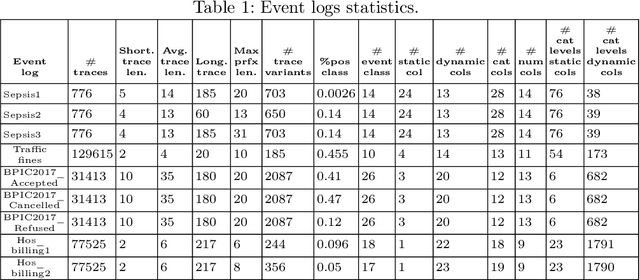
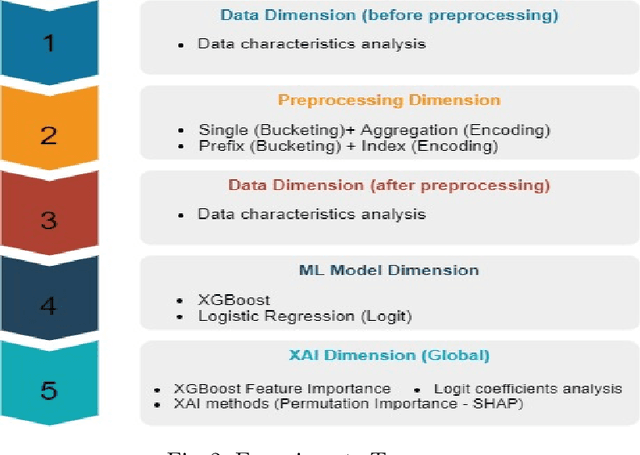
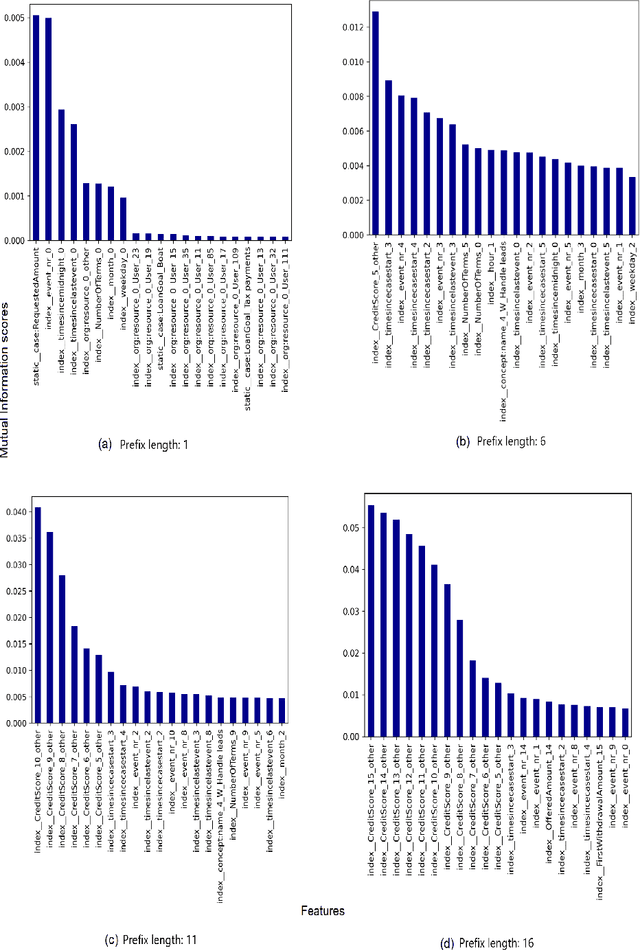
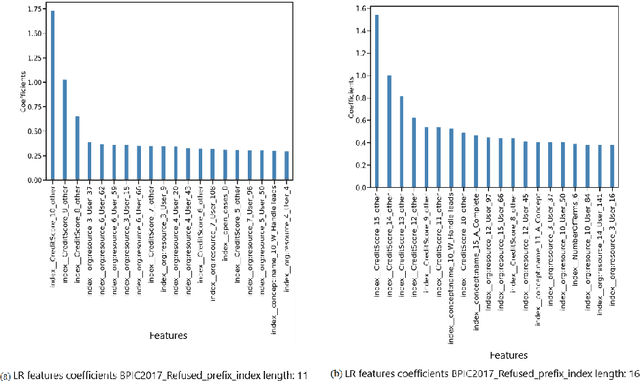
Abstract:Predictive business process monitoring (PPM) has been around for several years as a use case of process mining. PPM enables foreseeing the future of a business process through predicting relevant information about how a running process instance might end, related performance indicators, and other predictable aspects. A big share of PPM approaches adopts a Machine Learning (ML) technique to address a prediction task, especially non-process-aware PPM approaches. Consequently, PPM inherits the challenges faced by ML approaches. One of these challenges concerns the need to gain user trust in the predictions generated. The field of explainable artificial intelligence (XAI) addresses this issue. However, the choices made, and the techniques employed in a PPM task, in addition to ML model characteristics, influence resulting explanations. A comparison of the influence of different settings on the generated explanations is missing. To address this gap, we investigate the effect of different PPM settings on resulting data fed into an ML model and consequently to a XAI method. We study how differences in resulting explanations may indicate several issues in underlying data. We construct a framework for our experiments including different settings at each stage of PPM with XAI integrated as a fundamental part. Our experiments reveal several inconsistencies, as well as agreements, between data characteristics (and hence expectations about these data), important data used by the ML model as a result of querying it, and explanations of predictions of the investigated ML model.
CONDA-PM -- A Systematic Review and Framework for Concept Drift Analysis in Process Mining
Sep 08, 2020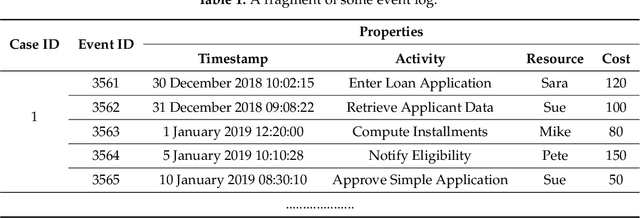
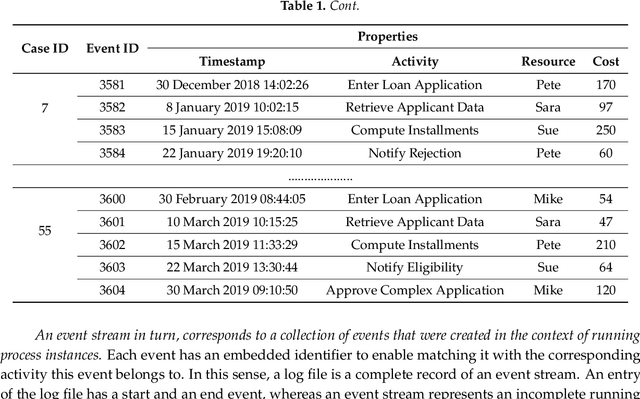

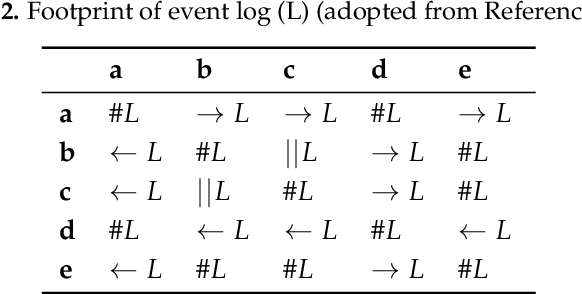
Abstract:Business processes evolve over time to adapt to changing business environments. This requires continuous monitoring of business processes to gain insights into whether they conform to the intended design or deviate from it. The situation when a business process changes while being analysed is denoted as Concept Drift. Its analysis is concerned with studying how a business process changes, in terms of detecting and localising changes and studying the effects of the latter. Concept drift analysis is crucial to enable early detection and management of changes, that is, whether to promote a change to become part of an improved process, or to reject the change and make decisions to mitigate its effects. Despite its importance, there exists no comprehensive framework for analysing concept drift types, affected process perspectives, and granularity levels of a business process. This article proposes the CONcept Drift Analysis in Process Mining (CONDA-PM) framework describing phases and requirements of a concept drift analysis approach. CONDA-PM was derived from a Systematic Literature Review (SLR) of current approaches analysing concept drift. We apply the CONDA-PM framework on current approaches to concept drift analysis and evaluate their maturity. Applying CONDA-PM framework highlights areas where research is needed to complement existing efforts.
* 45 pages, 11 tables, 13 figures
 Add to Chrome
Add to Chrome Add to Firefox
Add to Firefox Add to Edge
Add to Edge